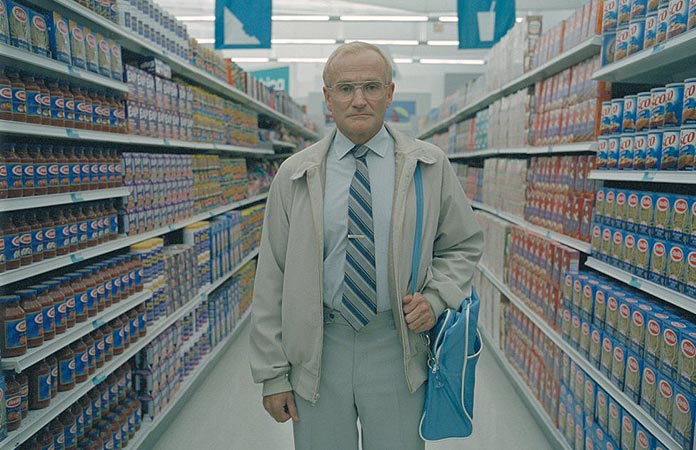Blu-Ray Review: One Hour Photo
Published on May 17th, 2013 in: Blu-Ray, DVD/Blu-Ray Reviews, Movie Reviews, Movies, Reviews |I saw One Hour Photo when it was released in theaters in 2002. I’ve never forgotten it.
It was the first film I saw with Robin Williams playing against type as a truly disturbed character. Even 1991’s The Fisher King was Disney compared to One Hour Photo.
Writer and director Mark Romanek cut his filmmaking teeth on music videos for Nine Inch Nails, Madonna, Michael and Janet Jackson, and Fiona Apple. With the success of filmmakers like David Fincher, the stigma of transitioning from music videos into feature films has thankfully diminished. For a first feature, One Hour Photo is astonishing, but it would still be were Romanek a veteran.
Blu-Ray Review: A Royal Affair
Published on May 1st, 2013 in: Blu-Ray, Current Faves, DVD/Blu-Ray Reviews, Movie Reviews, Movies, Reviews |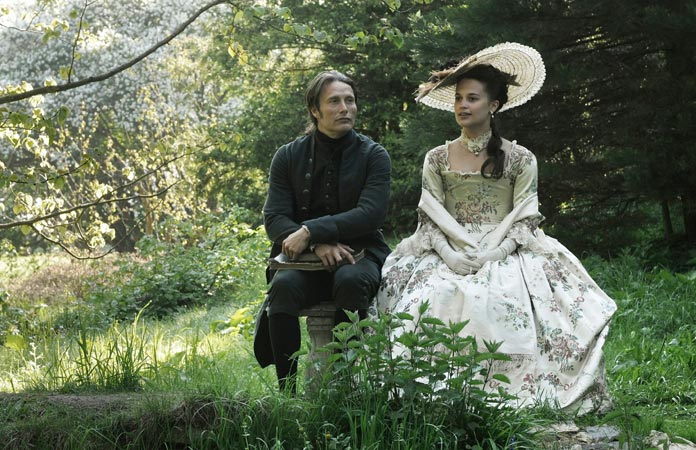
Photo courtesy of Magnolia Pictures
The period romance implied in A Royal Affair‘s title is fulfilled in the film, but if you’re looking for Shakespeare In Love, you may be disappointed. Rather than another version of the “love conquers all” fairy tale, it presents a nuanced, complicated, and not always flattering portrayal of the titular threesome.
Blu-Ray Review: Life Of Pi
Published on April 24th, 2013 in: Blu-Ray, Books, Current Faves, DVD/Blu-Ray Reviews, Movie Reviews, Movies, Reviews |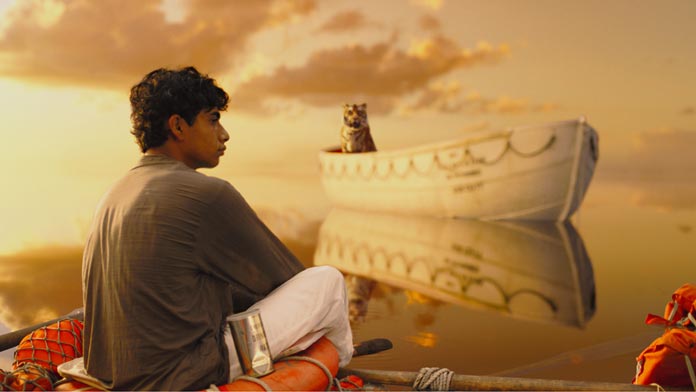
TM and © 2011 Twentieth Century Fox Film Corporation. All rights reserved. Not for sale or duplication.
Those who read Yann Martel’s Life of Pi towards the beginning of the last decade probably wondered how such a fantastic tale could ever be filmed. There were also those who, upon hearing that Ang Lee was tackling a film version of Life of Pi, felt elated and relieved that someone with such talent and commitment to a story was the one chosen.
Blu-Ray Review: Jack & Diane
Published on March 14th, 2013 in: Blu-Ray, DVD/Blu-Ray Reviews, LGBTQ, Movie Reviews, Movies, Reviews |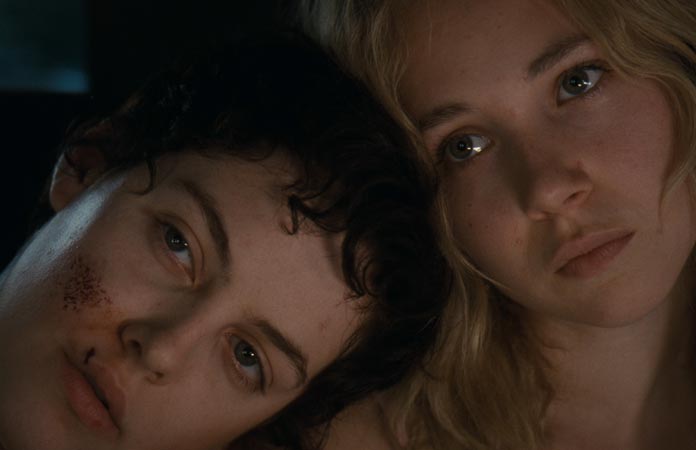
If you were expecting a horror romance from Jack & Diane due to the trailer, you’ll probably be disappointed. If you approach it with an open mind, however, you’ll be pleasantly surprised.
The film, written and directed by Bradley Rust Gray, is a slightly meandering glimpse at the romance between two young women, Jack (Riley Keogh) and Diane (Juno Temple). There are beautiful visuals that veer from hyperrealist to almost hallucinatory, and sometimes both at the same time. If that sounds like a contradiction, then it’s one that can easily apply to the film as a whole.
Blu-Ray Review: Skyfall
Published on February 28th, 2013 in: Blu-Ray, Current Faves, DVD/Blu-Ray Reviews, Feminism, Movie Reviews, Movies, Reviews |
Photo ©2012 Danjaq, LLC, United Artists Corporation, Columbia Pictures Industries, Inc. All rights reserved.
Oh, James Bond fans. For everyone who was electrified by Daniel Craig’s debut in Casino Royale, there were at least two who loathed the follow up, Quantum of Solace. For all Bond fans, Skyfall should be a revelation. It fulfills the promise that Casino Royale made: that Craig’s Bond is one of (if not) the best, and that the character has finally arrived in the new millennium.
Blu-Ray Review: Hard Core Logo: All Access Edition
Published on January 22nd, 2013 in: Blu-Ray, Canadian Content, DVD/Blu-Ray Reviews, Movie Reviews, Movies, Music, Reviews |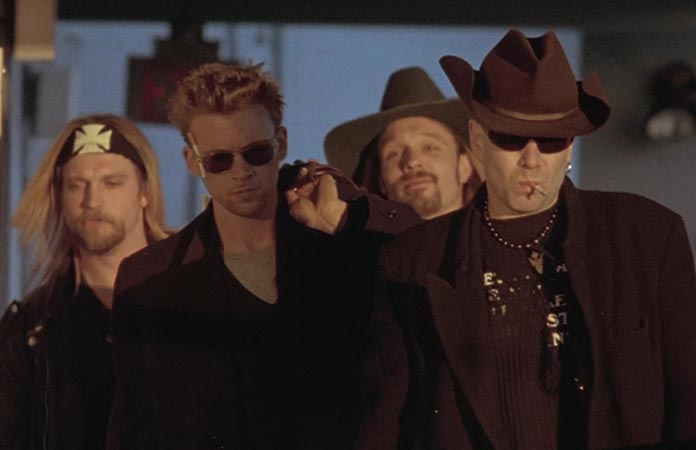
There are few movies I love more than Bruce McDonald’s 1996 Hard Core Logo. It’s a rock mockumentary about an obscure Canadian punk band who reunite for one last tour, hoping to recapture what fleeting fame they once had. When it came out in the States, it was advertised as a movie in the vein of This Is Spinal Tap. While it is occasionally hilarious, it has a dark, seamy underbelly. It’s not a feel good movie.
Hard Core Logo’s two stars, Hugh Dillon and Callum Keith Rennie, share an electric chemistry. Their scenes together don’t feel like acting. Dillon hadn’t acted a great deal before Hard Core Logo, and what he doesn’t have in technical “acting” skill, he makes up for in sheer magnetism. His character, Joe Dick, is by turns funny, malevolent, pathetic, and always fascinating. He is a mostly charming manipulator.
One of the finest actors around, Callum Keith Rennie is his icy cool counterpart. Rennie’s Billy Tallent is a gifted guitar player, just about to break through with another band after years of paying his dues slogging with bands like HCL. He reluctantly rejoins his comrades for a last tour, with an eye to the end, where he’ll join with indie sweethearts Jenifur.
Blu-Ray Review: Sleep Tight
Published on January 10th, 2013 in: Blu-Ray, Current Faves, DVD/Blu-Ray Reviews, Horror, Movie Reviews, Movies, Reviews |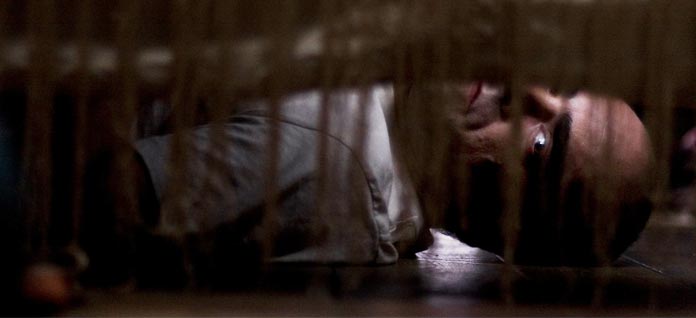
Jaume Balagueró has given us many great films both in his solo career and with his partner in crime, Paco Plaza. They are the ones responsible for the [REC] series and many other horror favorites. Balaguero’s solo films include Fragile, Darkness, The Nameless, and To Let. Now we have Sleep Tight, which is probably his greatest accomplishment to date. Balagueró is a director to keep an eye on.
Sleep Tight premiered at Fantastic Fest 2011. After the film was over, I looked around and saw smiles on everyone’s faces. It was a hit and was loved by many . . . including me. With its glamorous cinematography and quick dialogue, this film is tightly crafted. In Balagueró’s past films we were trapped with nowhere to go, and we find ourselves once again in this situation. He puts us in tight corners and small spaces, and we get a little claustrophobic.
Blu-Ray Review: V/H/S
Published on December 11th, 2012 in: Blu-Ray, DVD/Blu-Ray Reviews, Found Footage, Horror, Movie Reviews, Movies, Reviews |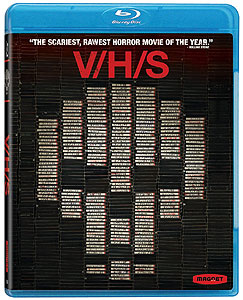
V/H/S is possibly the first found-footage horror anthology, two styles of filmmaking that are loved as much as they are hated. Found footage films are, without a doubt, one of the biggest cultural trends of the last decade and as such, can go either very well or horribly awry. Anthologies are another risky venture for horror films as inevitably there will be one or two segments which don’t measure up to the rest, thus rendering the entire project grievously flawed. These issues do plague V/H/S to a certain extent, but as an experimental indie horror film, it’s still a success.
The wraparound story of V/H/S (“Tape 56,” written by Simon Barrett, directed by Adam Wingard) is certainly creepy, but still off putting in the way it posits the main characters as disgusting losers. Our introduction to them is footage of their restraining a woman in a parking garage and filming her naked breasts as they pull off her shirt and later, trashing the hell out of an abandoned house. They do this for money but we get the idea that they’d probably do it for free, too. We next learn they’ve been hired to break into a house and steal one VHS tape, having been told “you’ll know it when you see it.” This makes sense within the context of the wraparound segment, but it doesn’t endear us to them one bit. In fact, I found myself pretty repulsed by the intro and wondered if I could even make it through the rest of the film.
Blu-Ray Review: Excision
Published on November 27th, 2012 in: Blu-Ray, DVD/Blu-Ray Reviews, Horror, Movie Reviews, Movies, Reviews |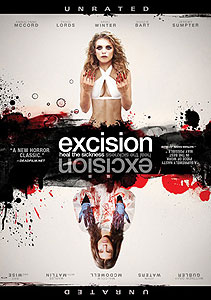
For his first feature, Excision, writer and director Richard Bates, Jr. has assembled quite an impressive cast: Malcolm McDowell, John Waters, Traci Lords, Ray Wise, Matthew Gray Gubler, and Marlee Matlin. Visually, the film is stunning, with pristine, static, centered shots and vivid colors. Excision‘s plot—a disturbed, misanthropic high school student named Pauline dreams (literally) of being a surgeon but her parents just don’t understand–doesn’t sound unique when boiled down to its most basic elements, but Bates manages to create a film that is genuinely disturbing.
Blood plays a crucial role in Excision, too. There is a whole lot of it. Yet it’s not a horror film, despite being well received by a lot of horror film websites and blogs, which puts it into that difficult position of being a genre film that doesn’t fit easily into any genre.
At times, this can be problematic. Excision feels like it wants to be a pitch black comedy or a parody of the suburban dream, but it’s not actually funny. Granted, some of Pauline’s quirks and attempts to navigate her unwelcoming environment at home and school are humorous, but not in a laugh out loud way. The roles of McDowell, Waters, Lords, and Wise in this context could seem like stunt casting, except for the fact that they’re all really good, particularly AnnaLynne McCord as Pauline and Traci Lords as Pauline’s mother Phyllis, whose character arc might represent the best work she’s ever done.
Blu-Ray Review: The Barrens
Published on November 13th, 2012 in: Blu-Ray, Current Faves, DVD/Blu-Ray Reviews, Movie Reviews, Movies, Reviews |
As someone who has never seen any films in the Saw franchise, I was unfamiliar with writer/director Darren Lynn Bousman until now. The legend of the Jersey Devil has been covered on both The X Files and Supernatural, so I was curious to see what a film about the creature—and one starring True Blood‘s Stephen Moyer no less—would be like. I was not disappointed.
Although The Barrens is not technically a horror film, it has elements of horror: monsters, paranoia, insanity, and just enough gore to be convincing. Unfortunately, dramatic thrillers with horror elements usually disappoint genre fans looking for scares or splatterfests. This is a shame, because The Barrens is a great movie.
The film was shot on Super 16 and the difference between this format and digital is obvious immediately. It has a wonderful gritty and grainy texture and shows off some incredible lighting set-ups to their fullest extent. My only complaint would be the overuse of flash edits in some of the scenes, but I realize that at least a few of these were necessitated by budget restraints and weather conditions.
